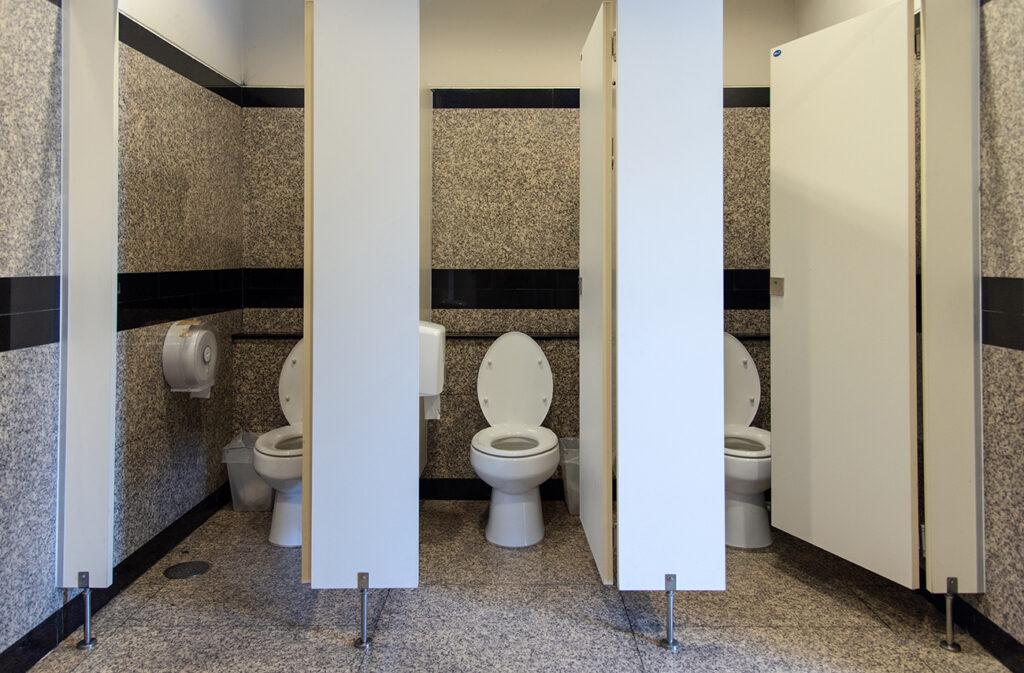A drop turned into a bursting pipe flooding the room. Flickering lights causing headaches and grief. A malfunctioning HVAC that hasn’t held temperature the last few days. These issues arise at anytime and represent the reactive approach to facility maintenance – addressing problems only after they arise, causing disruption, costly repairs, and frustrated employees and customers. But what if you could minimize these headaches? By transitioning to a proactive facility maintenance strategy, you transform your facility from a reactive battlefield to a well-oiled machine of efficiency.
This blog will equip you with the knowledge and tools to achieve proactive facility management. We’ll explore the cons of reactive maintenance, the pro’s of proactive maintenance, how to build a robust plan, and some tools and tech to consider.
The Pitfalls of Reactive Maintenance
While, occasionally, you can’t help but utilize a reactive approach because it’s simply out of your hands. When possible a proactive approach saves you from a plethora of hidden costs and headaches. These costs include:
- Emergency Repairs: Reactive repairs are often more expensive than scheduled maintenance due to the urgency and potential for additional damage.
- Downtime: Equipment failures disrupt operations, impacting production, customer service, and employee productivity.
- Safety Concerns: Reactive maintenance leads to equipment failure that poses safety risks to employees and visitors.
- Higher Energy Consumption: Neglected equipment often operates inefficiently, leading to increased energy costs and environmental impact.
The Benefits of Proactive Maintenance
On the flip side of reactive is proactive. The advantages of a proactive approach to facility maintenance are undeniable.
- Reduced Costs: Scheduled maintenance is typically more cost-effective than emergency repairs. You can avoid expensive breakdowns and extend equipment lifespan.
- Improved Efficiency: Regular preventative maintenance minimizes downtime and ensures your facility operates smoothly, maximizing operational efficiency.
- Enhanced Safety: Proactively identifying and addressing potential issues minimizes the risk of accidents and injuries.
- Reduced Energy Consumption: By ensuring equipment operates optimally, you can reduce energy usage, benefiting both your budget and the environment.
- Increased Asset Life: Proactive care extends the lifespan of your facility’s equipment and assets, reducing replacement costs and future maintenance needs.
Building a Proactive Maintenance Plan
Now we covered the pro’s and con’s lets discuss building a proactive facility maintenance plan. There are a few key steps to make it successful including:
1. Inventory Your Assets
This first step is tedious, but crucial. Start your plan by developing a comprehensive list of all equipment and systems within your facility, including their age, warranty information, and maintenance requirements. At a minimum you need a list of all your equipment and maintenance requirements. However, the more information you have the better off you’ll be in the long run when it comes to tracking its needs, repairs and when it’s appropriate to replace.
2. Identify Maintenance Needs
Research and identify the recommended preventative maintenance schedule for each asset. This might include regular cleaning, lubrication, filter replacements, and scheduled inspections. Not sure what website to follow and can’t find the manufacturers recommendations? Speak to a reputable company and question what they would suggest.
3. Prioritize Tasks
Not all tasks are equal. Not everything can be number one on the list of things to accomplish. You must prioritize your tasks. To determine the order you need to analyze potential risks, costs associated with failure, and equipment criticality to prioritize maintenance tasks.
4. Develop a Schedule
Create a calendarized plan outlining your maintenance tasks, their frequency, and who is responsible for completing them. Tools like Computerized Maintenance Management Systems (CMMS) can automate scheduling and tracking. You can also partner with a facility maintenance management company, such as SLM Facility Solutions Nationwide, who will monitor this process for you and execute it.
5. Document and Track
By maintaining a detailed record of completed maintenance tasks, identified issues, and spare parts used you can use this data to refine your plan and optimize future efforts. Additionally, it will help you determine when an asset is becoming too costly to repair and a replacing it should be taken into consideration.
Essential Tools and Technologies
Technology can significantly enhance your proactive maintenance efforts:
- Computerized Maintenance Management Systems (CMMS): These software programs streamline scheduling, automate reminders, track maintenance history, and simplify data analysis.
- Condition Monitoring Systems: Sensors and monitoring tools can detect early signs of wear and tear, allowing for preventative maintenance before equipment failure occurs.
- Building Automation Systems (BAS): These systems enable remote monitoring and control of your facility’s HVAC, lighting, and other systems, allowing for proactive adjustments and optimization.
Maintaining Momentum = Ensuring Long-Term Success
The key to success with proactive maintenance lies in the commitment and ongoing efforts which can be summed up in 3 steps. Step one is investing in training. By providing your team with the proper training on preventative maintenance procedures and the use of relevant technology they’ll be able to help everything stay on track. Step 2 is to continuously review your maintenance plan, analyze performance data, and adjust strategies as needed to maintain optimal efficiency. Finally, Step 3 is to foster an open communication. This includes maintenance personnel, facility users, and management to identify potential issues and concerns proactively.
From Reactive to Proactive: A Culture Shift
Shifting from a reactive to a proactive maintenance approach is not just about implementing new tools; it’s about embracing a proactive mindset. By anticipating needs, scheduling preventative maintenance, and leveraging technology, you can transform your facility from a reactive mess to a model of efficiency.
Ready to get started or need help to start? SLM Facility Solutions has over 25 years assisting restaurateurs, retailers, grocers, convenience store owners, and more streamline their facility maintenance services and stay on track on their assets. Contact us today to see how we can help you too.



